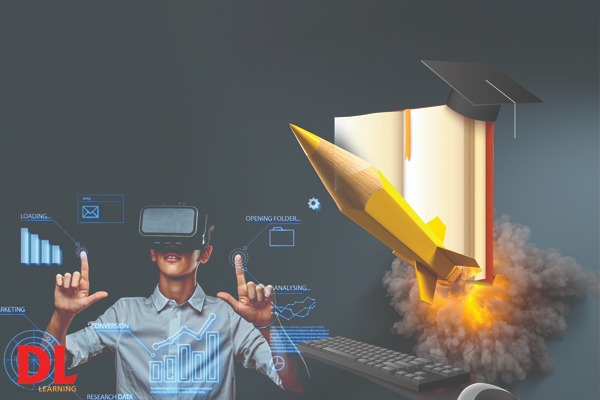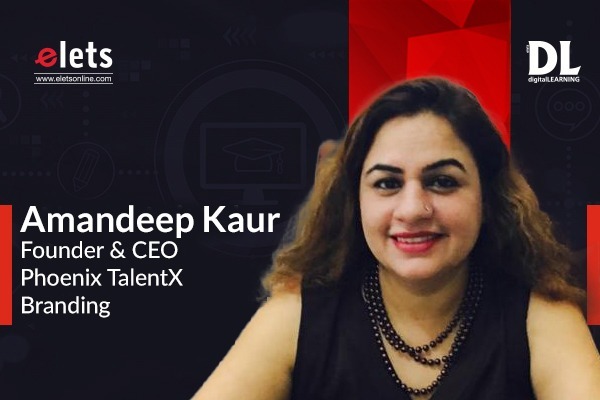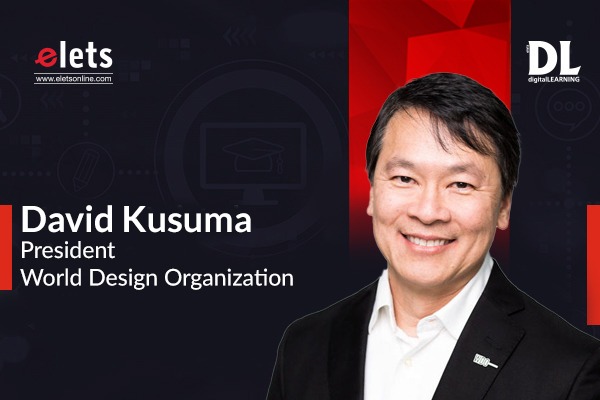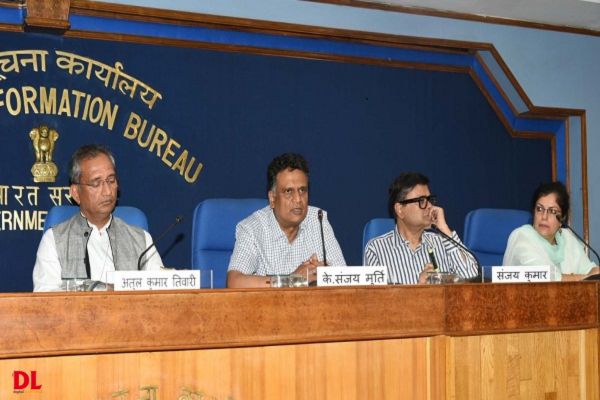Over the past few years, there has been a growing interest in edtech, with many claiming that it could revolutionise the way we learn and teach. From digital textbooks to online learning platforms and interactive whiteboards, edtech has promised to make education more accessible, engaging, and effective. However, despite the hype and investments pouring into the sector, edtech has yet to deliver on its promises. In fact, there are signs that edtech might be heading for a downfall, with upcoming challenges that could make it even more difficult for it to succeed.
According to global data, Indian edtech market size was valued at $3.42 billion in 2021 and is expected to achieve a CAGR of more than 30 per cent during 2021-2026. The increased internet penetration into the youth has pushed varied industries to go digital and education is one of the major sectors that followed digitisation to a great extent. With the advent of education going digital, edtech market has shown only an inclined graph. The current scenario however seems gloomy, while the Indian edtech market was the third largest in 2021. However, after the global boom of edtech during, and post-pandemic, the situation seems to turn out. Money Control research and other media reports said that 3,700 edtech employees were laid off alone till June 2022. As per a report by Inc42, initially, 60 employees from the tech and product teams were laid off. This round of layoffs witnessed at LEAD comes as an annual exercise. The list is endless from the unicorn edtechs like BYJU’S, Unacademy, UpGrad, Eruditus, and LEAD who laid off several employees despite having several rounds of funding.
An impetus on sudden ‘pitfall’
One of the main reasons for the downfall of edtech is the faith of the parents to trust a complete digital resource for their wards’ future. However, the same was mitigated to a larger extent during covid when schools were closed and entire schools shifted to screens. The process worked well in the unprecedented times and the faith of parents was gained. But once the situation got settled with the new normal, a lot of parents shifted back to brick and mortar. Also, despite the promises of personalised learning and improved outcomes, there is little research to support these claims, especially for early childhood education.
Furthermore, many edtech products are not rigorously tested or evaluated, and then often show mixed or inconclusive results. In some cases, the use of edtech can even be detrimental to learning, as it can distract students or lead to a shallow understanding of concepts.
Another factor contributing to the downfall of edtech is the digital divide. While edtech has the potential to democratise access to education, it also exacerbates existing inequalities. Not all students have access to the internet, computers, or other devices needed to use edtech products, and even those who do may not have the skills or support needed to use them effectively. This means that edtech can end up widening the achievement gap between privileged and disadvantaged students, rather than narrowing it.
While an upcoming setback can be seen as tweaking the inclined graph of edtechs is the AI tools like ChatGPT. Earlier chatbots were considered useful for edtech as they were generating customised question papers, evaluated students’ performance, and even helped teachers in assessing students. But with the emergence of AI tools like ChatGPT, the need for digital trainers or educators is somehow going to dissolve. The definition of ‘Guru’ seems to evolve with the emergence of such high-end tools.
Industry Speaks
Baseema Anayat, principal, Shah Rasool Memorial Welkin Higher Secondary School, Jammu and Kashmir shared, “If we look at our education system pre and post-COVID, one finds a drastic change. Edtech, Ahhh Change is something that one can not avoid. Like every industry, education too is going through a digital transformation.”
“Now its impact on the school system as I said earlier that any technology that is introduced, will only facilitate us. Besides, traditional education, edtech is here to stay along. We can use technology to provide students with a personalised learning process according to their ability”, she added.
Rashmi Singh, Principal, Poddar Brio International School, Badlapur, Maharashtra shared, “E-learning platforms are transforming the education sector in the country by bridging the gap between supply and demand. With affordable internet charges, even the rural sectors can use such platforms for personal and professional development. Language learning, online tutoring and technology skills development are the dominant themes in the education landscape of the country. The fast-paced emergence of Edtech has transcended beyond classroom boundaries within no time. The education system is evolving and attaining a more holistic approach. With industries directly connecting with e-learning institutions. the content has never been so up-to-date. Together, all this makes e-learning platforms complete, and students and working professionals future-ready, in a matter of months.”
The e-Learning penetration is observed in various large and medium-sized organizations for a cost-effective mode of skill development and training sessions. In the current scenario of technological disruption, professionals have to re-skill themselves every 4 to 5 years for being relevant to their existing job roles. As already hinted, the Government of India is taking a lot of initiatives to boost and accentuate the e-learning sector. Thus it is adapting to the technological revolution. “E-learning platforms are bringing a measurable difference in students’ engagement and performance. It is reducing gaps in the delivery of education and giving a new dimension to the education space.”
According to renowned educator Welton Fitzwater, “The future of the world is in my classroom today.” The statement is true to its core with the emergence of the new-age classroom in the era of digital transformation. Edtech is one of the major sectors that have been affected by digitisation. The multi-channel approach to the education sector has enabled students to gain knowledge via various mediums besides classrooms, like smartphones, desktops, laptops, tablets etc, she added.
I strongly feel all such online platforms and learning sites contribute to the fast-growing Edtech sector of the nation. Besides the online platforms, schools and colleges also take part in the educational revolution and it will better the school education ecosystem, she concluded.
Shakeup despite the funding boom
The Indian edtech market valued at $750 million in 2020 and is predicted to reach $4 billion by 2025, is suddenly facing some turbulence. In 2022, Edtech has seen the most layoffs, followed by consumer services and e-commerce. Four of the seven edtech unicorns laid off 8,000+ employees, and the sector has also seen five startups shut down in 2022. In April 2022, Unacademy laid off 600 employees, followed by Vedantu which laid off 200 employees, and then 800 WhiteHat Jr employees resigned from the Byju’s-owned edtech start-up within a span of 2 months after being asked to work from office. The ride has been topsy-turvy both for the employer, employees and leaders of edtech segment right from the beginning of 2022.
However, there were some surprising moments for the edtech companies as well. Funding in the edtech segment has shown a positive trend in Q3 CY22 compared to the previous quarter (in value terms), as per the PwC India report titled, “Startup Deals Tracker – Q3 CY22.” In Q3 CY22, 81 per cent of funding activity was contributed by upGrad, which raised $225 million, followed by Sunstone, which raised $35 million. According to Inc42 data, Indian startups raised $25 Bn in 2022 which was down 40% compared with the watershed moment that was 2021.
Edtech wave in the education sector was massive and impressive but the shift has revealed deep-seated inequalities in access to technology and internet connectivity. The upcoming challenges for edtech are numerous and complex. One of the main challenges is the need to balance the benefits of technology with the need for human interaction and personalised instruction. As, many limitations of edtech are witnessed in terms of providing social interaction, hands-on learning, and emotional support, which are crucial for many students. While edtech can provide access to vast amounts of information and resources, it cannot replace the guidance and feedback of skilled teachers. Furthermore, edtech products often rely on standardised assessments and algorithms to personalise learning, which can overlook the unique needs, interests, and strengths of individual learners.
Another challenge is the need to address the digital divide and ensure that all students have access to technology and support. This requires not only investment in infrastructure and devices but also training for teachers and families on how to use them effectively. It also requires attention to the social and emotional needs of students, as well as the cultural and linguistic diversity of classrooms.
While the third challenge is the need to promote critical thinking, creativity, and collaboration, which are essential skills for success in the 21st century. Edtech can provide opportunities for exploration and experimentation, it shouldn’t promote passive consumption and rote memorisation. Edtech somehow also isolates students from each other and from real-world contexts, which are crucial for developing empathy, cultural competence, and problem-solving skills.
To overcome these challenges and avoid the downfall of edtech, we need a more holistic and thoughtful approach to technology integration in education. This approach should start with a clear understanding of the goals and values of education, as well as the needs and aspirations of students and teachers. It should also involve ongoing evaluation and improvement of edtech products, based on rigorous research and feedback from users.
Furthermore, this approach should prioritise equity and inclusion, recognising the diversity of learners and the complex social and cultural contexts in which they learn. It should also foster collaboration and dialogue among all stakeholders, including educators, students, parents, policymakers, and industry leaders. By working together, we can create!
Leapfrogging into the future!
India’s education ministry made some significant announcements in the past 6 months. The announcement of setting up foreign university campuses in India, a hands-up for e-degrees, dual degrees & twin degrees as well as a major impetus on skills development is going to snatch a major market for edtech sector.
As per the recent report by Technavio on the Online Education Market, India’s online education market is set to grow at a CAGR of 21 per cent between 2020-24 to reach a market size of US$ 14.33 billion, indicating that prospects of this area are vast. The Edtech segment is one of the fastest to grow with such impressive numbers. Some of the unicorn edtech leaders even stated that the sudden downfall of edtech market will not be lingering for long. The market will rise and will rise high.


























